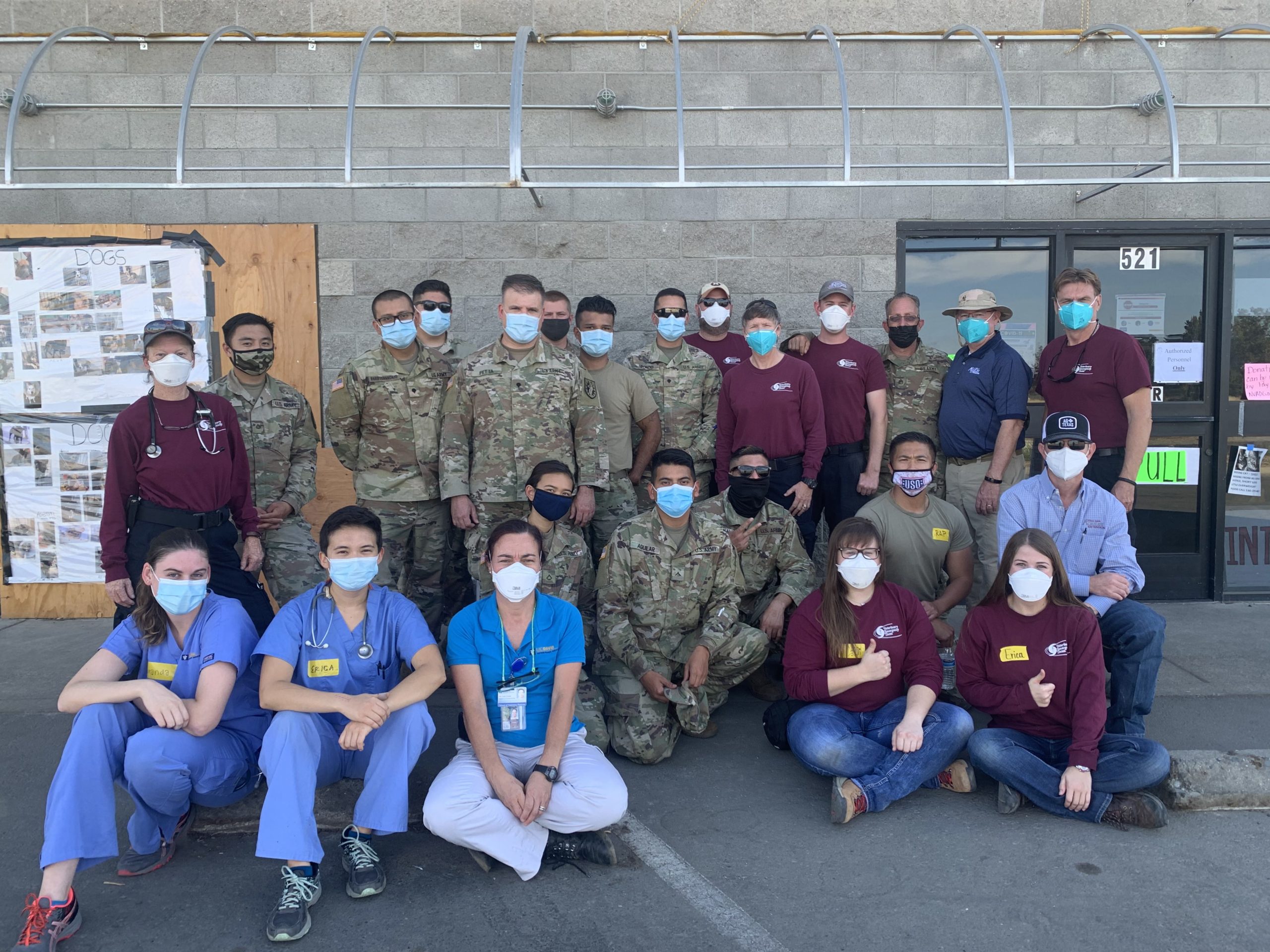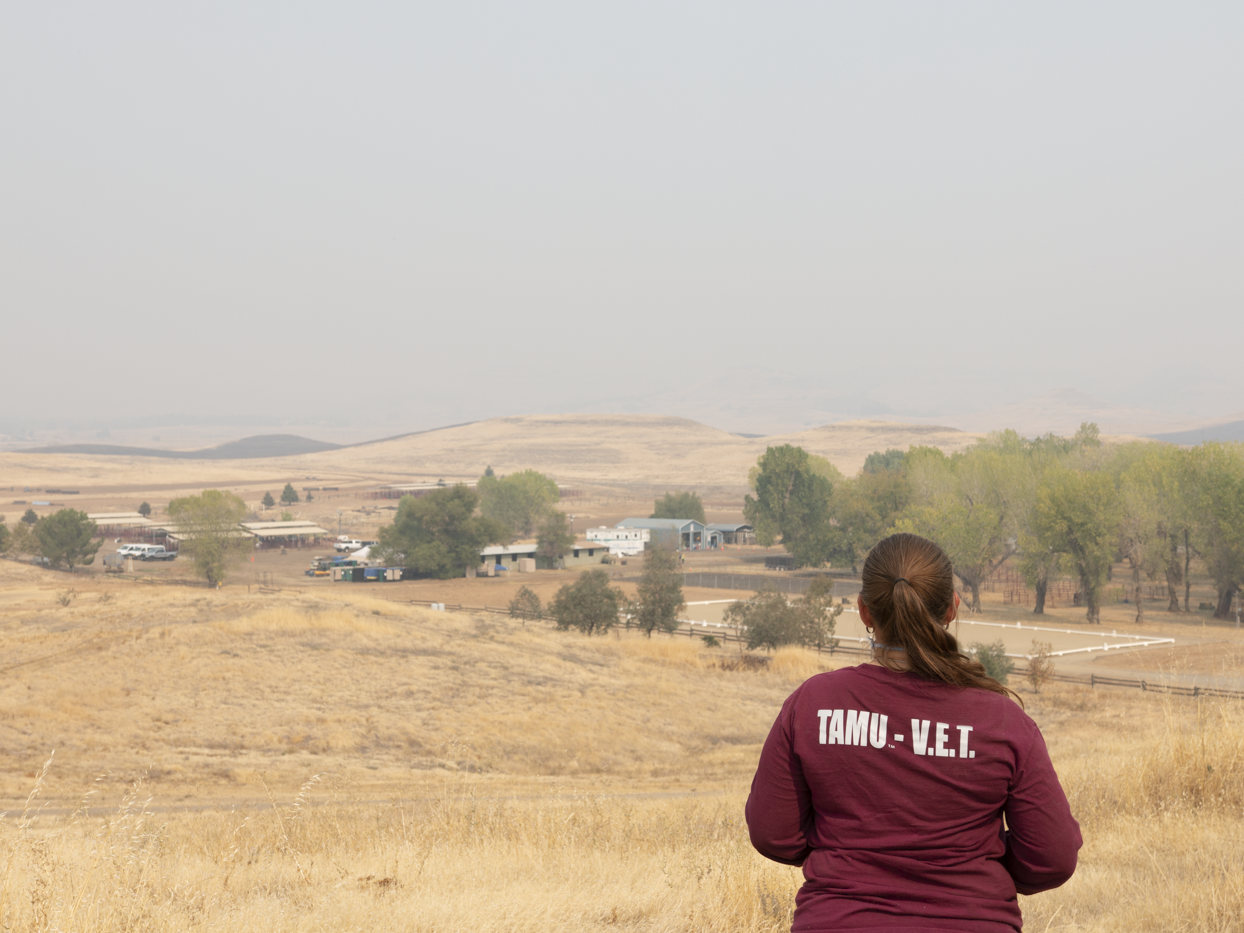VET Returns Home From Month-Long California Deployment
Story by Aubrey Bloom, CVMBS Communications
The Texas A&M Veterinary Emergency Team (VET) and agents from the Texas A&M AgriLife Extension returned home on Saturday after a month-long deployment to Butte County, California, where the team cared for more than 500 animals displaced by the ongoing wildfires.
The animals were spread across three shelter locations, each with a variety of medical and logistical needs. In total, more than 18 VET and AgriLife team members deployed.
According to VET director Dr. Wesley Bissett, the fact that it was an out-of-state deployment increased the complexity of the operation.
“Out-of-state deployments represent unique challenges for the VET-AgriLife team,” he said. “Rotation of personnel is much more difficult and that is always a concern, particularly when you need additional help. The distance and travel plans just complicate what we do.”
The ongoing threat of additional fires was another unique challenge during the deployment.
“We were here a month and haven’t seen a drop of rain,” Bissett said. “The area is incredibly dry right now and it placed us in the difficult place of working toward ending operations while simultaneously being ready to start a whole new operation. There have been two fires that if not for the quick actions of firefighters, would have seen us increasing our animal numbers.”
While quickly integrating with the local response team can also be a challenge sometimes faced during a deployment, because the team had previously deployed to Butte County in 2018, that wasn’t a problem. In fact, according to Ryan Soulsby, the incident commander overseeing the animal response operation and a Butte County senior animal control officer, the reaction when Texas A&M answered the call for help was one of immediate relief.

“When we received the phone call from Texas A&M saying that they were responding to the request, we had a celebration in the operations center,” Soulsby said.
Many of the local responders, some of whom lived in the evacuated area, had been working long days for three straight weeks, and the Texas A&M team’s arrival allowed those members to finally take a break. Along with the operational assistance, though, Soulsby said one of the great things about working with the VET and AgriLife team is the shared value of how important animals are to their owners.
“Every owned animal is like their child,” he said. “Texas A&M comes in and feels the same way. They take care of these animals like they are their own. The animals are stressed, they don’t know what’s going on, and their humans are stressed, but we take care of them one step at a time.”
Another unusual aspect of this deployment is that because it was an out-of-state deployment and COVID-19 protocols were in place, Texas A&M students could not deploy with the team. But that didn’t stop the teaching mission of the VET.
Students from the University of California, Davis, Student Veterinary Emergency Response Team—a student-run extracurricular organization—deployed to assist the VET medical team. According to co-president and third-year veterinary student Claire Stuhlmann, the experiences they’ve had over the last several weeks are invaluable.

“It’s been awesome learning from a new group of veterinarians, responders, and technicians,” she said. “Our students have been learning so much. Texas A&M has a really well-developed and well-trained team and have been doing this a long time. So, it’s a really great opportunity to learn and see how a well-oiled machine is run.”
The relationships built during deployments don’t stop when the event winds down. The already-established relationship with Butte County made it easy for the team to deploy, and the same is true on the teaching side—there are already plans being made for the teams and students at UC Davis and Texas A&M to meet and continue learning from one another.
“In Texas, there’s a definite commitment to animals and there’s a high level of expertise that we’ve built up; sharing that expertise just makes sense,” Bissett said. “When we go somewhere, we come back with lessons that make our Texas response better, and that’s true here—we’ve learned a lot and those lessons are going to come home and make us better and make Texas better.”
###
For more information about the Texas A&M College of Veterinary Medicine & Biomedical Sciences, please visit our website at vetmed.tamu.edu or join us on Facebook, Instagram, and Twitter.
Contact Information: Jennifer Gauntt, Director of CVMBS Communications, Texas A&M College of Veterinary Medicine & Biomedical Sciences; jgauntt@cvm.tamu.edu; 979-862-4216


